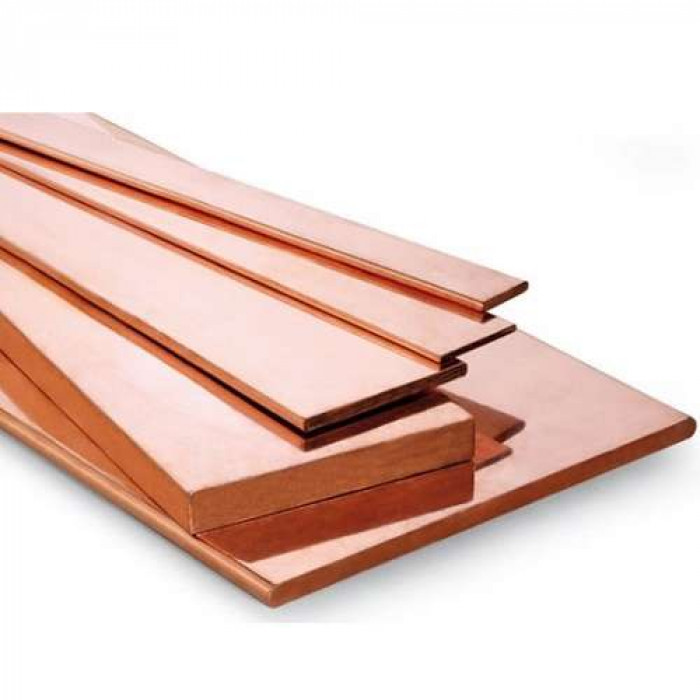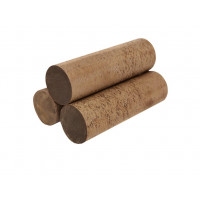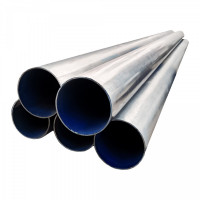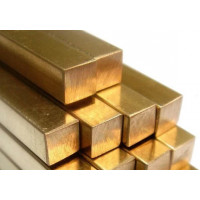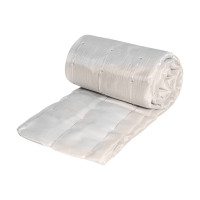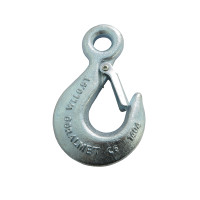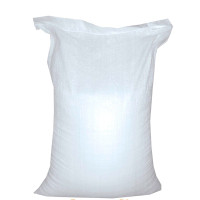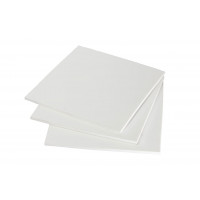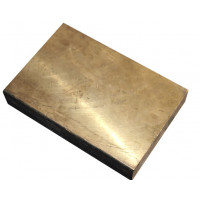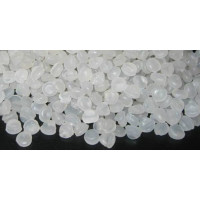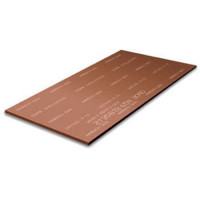Copper bus M1 40х8 mm - a profile made of various copper alloys, in which the length is many times greater than the width, and the thickness is only a few millimeters. The production of copper strips comes from copper grades M3r, M3, M1r, M1, M2r, M2 according to GOST 1173-2006 and GOST 859-2001. According to the specifications, the dimensions correspond to certain established dimensions.
In the process of manufacturing metal and parts from various alloys, it was customary to classify all goods in order to simplify the process of understanding between different enterprises and buyers and in order to reduce the labeling of products.
According to the material and its condition:
semi-solid (P);
solid (T);
soft (M).
According to the manufacturing method:
hot-rolled (G);
cold rolled (D).
According to the total length of the product:
unmeasured (ND),
multiple measured (KD).
Tires are widely used in the design and creation of various electrical equipment, powerful power systems, busbars, distributors, etc. In addition, the high anti-corrosion properties of copper and the manufacturability of material processing make it possible to use tires as blanks for the manufacture of various fittings, parts, and materials for design projects. In combination with sheet copper, tires are used as building and finishing materials, for example, in the manufacture of copper roofing.
The copper bar is the main product for use in electrical panels and circuit breakers that carry large currents.
This material can have a very wide range of applications. From low voltage switchboards to more powerful cabinets and switchboards.
The use of copper for this work is not accidental, because it is a noble material with excellent electrical conductivity. Proof of this is its application in most electrical and electronic cables in various segments, from industrial installations to electronic components.
What is a copper bus?
Copper busbars are characteristic for conducting electric current. They are mostly solid copper rods, usually electrolytic.
The insulated copper bar is the safest model to use in power distribution, which means that the product is more effective in preventing short circuits.
Thus, this bus provides maximum safety when working with electrical panels, making it a great option for most companies.
Application is made only in electrical circuits. The insulated busbar has 1kV insulation and is made from flame retardant rigid polyurethane—another useful feature in case of a short circuit.
In this way, the parts that are affected by the electric current are completely insulated, effectively fulfilling their role through copper, but guaranteeing the safety of those involved in the process.
Bare copper bar
Bare copper bars are capable of carrying large amounts of electrical current, and for this reason they are mostly inserted into environments that will not be frequently handled and human present.
In this type of bus, only specialized professionals are allowed to provide services, as they are able and trained to work in accordance with the safety standards required for the job.
Neutral bus and ground
There are also neutral and ground rails that are used for specific requirements for each type of conductor mentioned above.
They are necessary for safety, as they prevent short circuits and fires in the entire electrical installation, which can endanger the entire safety of the environment and even cause fires, depending on the electrical discharge, the type of environment and its conditions.
In practice, these tires lead to leakage of electrical discharge to the ground. The neutral type, for example, uses terminal wires to connect the zero point of each circuit, that is, at points where there is a potential difference between the phases of the panel.
Most often, all wires, cables and tires are made of 2 materials: aluminum and copper. All professional electricians advise choosing copper conductors, because copper, unlike aluminum, has a higher mechanical strength, is highly flexible, which makes it very easy to install copper conductors, it fits perfectly with other conductors (copper) and does not oxidize. Aluminum, although it has parameters approximately similar to copper, oxidizes very quickly in air, which significantly impairs its conductivity. In addition, when connecting aluminum conductors to conductors made of other materials, a galvanic couple is formed, which stimulates the development of corrosion, and the conductor will quickly collapse. That is why it is strongly recommended to use copper, despite the cheapness of aluminum.
A copper bus, like any other material, has its own characteristics and types, all of which are regulated by GOST 434-78. It’s worth starting with the division of tires into hard and soft:
Solid (CMT). They are used less often than soft ones. Made from ordinary copper, has a lowerconductivity than the tires are soft. Busbar copper ShMT are used in places where it is required to ensure the strength and immobility of the busbar.
Soft (SMM). They are widely used in all industries: from aircraft construction to metallurgy, in everyday life, in the space industry, etc. For their manufacture, soft copper grades M1, M1M, M2, etc. are used.
Copper bus from oxygen-free copper (SHMTV). This is a special copper alloy that does not contain oxides. At the moment, all branded manufacturers make products from just such copper. It has several advantages over the usual one: there are no harsh conditions for heat treatment, copper does not evaporate when the conductor is heated, it is less brittle and brittle. However, the price of such products is very high and does not justify their purchase.
An electrical bus is selected not only by materials, but also by the conditions of its use. So, tinned is used in electrical installations that are in wet conditions (street, shed, wet room). Often such conductors are used at substations, for transition from transformers and gas-insulated circuit breakers. Flexible copper busbar can be both braided and flat (in the form of a strip). Flexible copper busbars are used for mounting busbars of various installations, because they have high conductivity and mechanical strength. Another type of busbar is a wicker flexible insulated copper busbar.
Each type of busbar has its own section (all possible sections are indicated in GOST 434-78), however, if necessary, a number of companies can manufacture an electrical busbar of non-standard sizes. To do this, it is necessary to draw up a specification and draw a drawing of such a non-standard part. Without a specification, manufacturing to individual dimensions is difficult, in addition, such a part cannot be used in industrial installations.
Advantages
Copper is such a metal, which in itself includes a bunch of pluses. Therefore, the copper bus has many features. For example, it is an excellent conductor of both heat and electricity. Also, she is not afraid of corrosion, because she has a remarkable resistance to such formations. It is also worth noting that the copper bus has excellent ductility to various types of machining, welding and cutting.
Characteristics
The thickness of the copper bus varies and can be from four to thirty millimeters, and the width is from sixteen to one hundred and twenty millimeters. Its length can be from two to six meters. During the manufacturing process, a copper bus is subjected to special processing, which involves rounding corners in the cross section of the metal product. For the most part, copper bars are made from copper, which is marked "M1".
Oxygen Free Copper Busbars
There are copper bars that are made from oxygen-free copper. They are used for the manufacture of space and vacuum equipment. Also, such metal products can be found in some switchgears, linear accelerators, superconductors and electronic devices. It should be noted that oxygen-free copper tires are indispensable in the field of microelectronics, as well as in the nuclear power industry.
Characteristics of copper bars
The raw material for manufacturing is wire rod, long products, ingots, blanks. The quality of the feedstock must comply with GOST 859-2014, be at least grade M1. Marks M2 and others are allowed for production according to TU.
The sizes of copper tires are regulated by GOST 434-78. GOST specifies standard dimensions for width and thickness, corner radii and deviations from it. Permissible tire length is 3-6 meters, but by agreement of the parties, a length of 2 meters is allowed.
Tires must not have defects exceeding the maximum deviation after the control stripping. Small traces of oxidation or grease on the surface are acceptable. GOST regulates crescent. When bending solid ShMTV tires, cracks and delaminations should not appear.
Mechanical properties and resistivity are regulated by GOST 434-78.
Tire marking and packaging are in accordance with GOST 18690-2012. Each bay is marked with a label, which indicates the manufacturer's trademark, product designation, date of manufacture, batch number, brand of TK, GOST 18690-2012.
The manufacturer bears warranty obligations for the products. If the conditions of storage and transportation are not violated, the guarantee from the moment of production for tires ShMT and ShMTV is six months, ShMM - a year.
What influence grades of copper?
Copper grades differ in composition and amount of impurities. Under normal operating conditions, the oxygen content at the level of 0.08 - 0.001% does not affect the properties of tires. The negative effect is noticeable only at high temperatures, therefore, for high-temperature operation, oxygen-free, refined copper grades are chosen.
Bismuth, zinc, lead, cadmium, other fusible impurities and oxygen complicate welding and soldering. In the process of heating, brittle zones are formed. From a technological point of view, oxygen-free copper is preferable in this case.
Silver content at the level of 0.05% decreaseThere is no creep of copper without loss of electrical conductivity, and it also doubles the temperature of copper rectistallization.
Characteristics and application of electrical copper busbar
The electrical copper bus is a rolled metal product with excellent conductivity and good operating parameters.
According to its structure, an electrical copper bus is a strip made of high purity copper, or made from twisted conductors with a round cross section. These two forms are the most popular.
Copper busbars are blanks for the manufacture of all kinds of auxiliary and fasteners that are used in energy saving systems. However, they are also used in many industries, radio engineering and domestic construction.
A metal such as copper has excellent thermal and electrical conductivity. At the same time, it has high corrosion resistance and attracts many with its technological qualities. Rolled copper, including copper strip and tape, is characterized by excellent ductility, malleable to any type of welding. This material can be reused after disposal.
The weight of a copper bar depends on its thickness, width and length. For example, the weight of one linear meter of an electrical copper bus 50x5 is 2.23 kg, 40x4 is 1.43 kg, 100x10 is 8.91 kg, 120x10 is 10.69 kg, and the weight of a 15x3 copper bus is only 400 grams.
Copper bus has good ductility, high resistance to corrosion processes, thermal and electrical conductivity.
The grade of rolled metal indicates the purity of the alloy, its alloying elements and indicates the features of manufacturing methods.
Copper bus M0b (oxygen-free)
The M0b marking copper bus is a strip made of an oxygen-free copper alloy that does not contain impurities, or contains, but in the smallest quantities. This product lends itself well to temperature treatment, all kinds of welding and soldering at high temperatures.
Copper bars M1 and M2
Busbars made of copper markings M1 or M2 are made from raw materials containing oxygen and requiring special conditions for processing by welding or soldering. These products are malleable to deformation in a hot or cold state and are characterized by high wear resistance after a long time of use.
In accordance with the state of the material, you can buy a solid electrical copper bus - CMT, or a soft one - CMM.
Hard copper bars are used less often than soft ones. They are made from a common copper alloy and have lower conductivity than soft bars. The CMT copper bus is applicable in areas requiring a durable and immovable bus duct.
Due to its operational parameters, the SMM soft copper bus has gained wide popularity in a wide variety of industries: from the aircraft industry and the metallurgical industry to household and space areas.
In these areas, soft grades of copper M1, M1M, M2, etc. are used.
Oxygen Free Copper Bar
Oxygen-free copper bus bar (SHMTV) is a rolled metal product made of a copper alloy that does not contain oxides in its composition.
To date, all leading manufacturers use this copper for the manufacture of their products, since it has a number of advantages in comparison with copper of other grades.
Oxygen-free copper does not require special conditions for heat treatment, there is no evaporation during heating, it is less brittle and brittle. But the price of oxygen-free copper tires is unreasonably high.
Rolled metal has a clean surface, smooth cut edges without bending the side edges and obvious burrs. Usual quality of finish and normal production accuracy in width and thickness, matte and even surface.
Electrical copper tires have a number of advantages, thanks to which they have become popular and are used as auxiliary raw materials for electrical engineering:
— they are convenient and easy to assemble and dismantle;
- have structural versatility;
- they are flexible, allowing copper products to keep all the positive parameters in a state of deformation;
- need high temperature conditions for their melting (more than 1000 degrees Celsius). This guarantees a certain fire safety;
— differ in plastic durability;
- have anti-corrosion properties;
- durable;
- in the production of copper busbars, copper alloys of category M1 (99.9% of the copper composition) are used with the presence of alloying elements, often titanium, which increase the ductility of finished products;
- on the market for this product there are electrical copper busbars, which are absolutely prepared for electrical work in a narrow direction. They have special endings with holes for universal fasteners and factory insulation, suggesting the required safety indicator for certain systems.
Advantages of electrical copper bars
Basically, tires, cables and wires are made from such metals,like copper or aluminium.
But qualified electricians prefer exclusively copper conductors, since they, in comparison with aluminum tires, have a higher level of mechanical strength, have good flexibility, which makes it easier to install copper conductors. At the same time, they easily dock with other conductors (made of copper) and are not subject to oxidation.
Although the characteristics of aluminum alloy are approximately similar to copper, in air it is subject to oxidation, due to which the conductivity of products deteriorates.
Also, if aluminum conductors are connected to conductors made of copper or other materials, a galvanic couple is formed. It accelerates the development of corrosion, which leads to the destruction of the conductor.
This is the main reason why copper products should be used in the work, and not from the cheaper aluminum alloy, especially in contact with a copper conductor.
Dimensions and marking of copper bars
The electrical copper busbar is manufactured in thickness from 4mm to 30mm and width from 16mm to 120mm. The length of the strips that you can buy is in the range from 2 m to 6 m. During production, the corners in the cross section of the product are rounded without fail.
At the heart of the production of electrical copper busbars is copper marking M1 or more, where impurities do not exceed 0.05% of the total mass.
In the case when the product is made of oxygen-free copper, the fourth letter B is added to the designation.
Application of copper bars
Copper busbars are often used for mounting main busbars or trolleys. The finished product makes it possible to save electricity, is lightweight, durable and highly durable in operation.
They are used in all kinds of electrical installations. For example, in low-voltage equipment, electrical copper bars are used to interface with electrical circuits.
In high-voltage equipment, they can be used in areas requiring low reactive and active circuit resistance.
Tires made of oxygen-free copper are used for the production of space and vacuum equipment. They form the basis of switchgears, linear accelerators, superconductors and electronic devices. These copper products are popular and indispensable in the field of microelectronics, nuclear energy, construction and jewelry production.
The main types and types of electrical tires
An electrical bus is a conductor with low resistance (active and reactive), to which individual electrical circuits (in low-voltage installations and networks) or high-voltage devices (electrical substations, high-voltage switchgear, etc.) can be connected. The use of tires provides savings in installation space, material and labor costs.
As the main material for the manufacture of electrical busbars, aluminum and copper are usually used.
Tire production is regulated by a number of GOSTs and technical specifications:
GOST 15176-89 Pressed tires for electrical purposes from aluminum and aluminum alloys. Specifications.
GOST regulates the parameters in accordance with which aluminum tires should be manufactured - thickness, width, length, cross-sectional area, circumference diameter and the corresponding mass per 1 meter for finished tires.
Permissible limit deviations from the specified values, aluminum grades, quality requirements, appearance, mechanical and electrical parameters are indicated. The rules for labeling, packaging and acceptance of tires of this type are given.
GOST 434-78 Rectangular wire and copper bars for electrical purposes. Specifications. The standard specifies the nominal dimensions and design sections of copper bars, copper grades, electrical resistivity and limit deviations of dimensions.
Permissible tire lengths and coil weights are given, as well as possible deviations from these values. There are requirements for the material of tire manufacture, the appearance of finished products (permissible defects, colors).
The rules for packaging, transportation and storage, acceptance and testing are set out.
GOST 10434-82 Electrical contact connections. Classification. General technical requirements.
The classification of contact connections is given according to such parameters as: scope, climatic version and categories of placement of electrical devices, design.
The requirements for the design, electrical and mechanical parameters, reliability and safety depending on the classification are indicated. References are given to a number of related GOSTs.
GOST 8617-81 Pressed profiles from aluminum and aluminum alloys. Specifications. A classification of profiles of this type is given (by type, by the state of the material and by the type of strength).
References are given to GOSTs with nominal dimensions, the values of limit deviations are indicated.
The technical requirements for grades of aluminum alloys for the manufacture of profiles, for mechanical properties,allowable defects, surface quality and appearance of finished products. The conditions of transportation and storage, acceptance rules, test methods are described.
TU 1-5-009-80 Electrical tires made of aluminum alloys.
Copper busbars: characteristics, types, applications
In residential buildings, copper bars are installed in electrical distribution panels. This is because copper has a high electrical conductivity, withstands temperature extremes, and its operating voltage reaches 1000 V.
Characteristics of copper bars
The raw material for manufacturing is wire rod, long products, ingots, blanks. The quality of the feedstock must comply with GOST 859-2014, be at least grade M1. Marks M2 and others are allowed for production according to TU.
The sizes of copper tires are regulated by GOST 434-78. GOST specifies standard dimensions for width and thickness, corner radii and deviations from it. Permissible tire length is 3-6 meters, but by agreement of the parties, a length of 2 meters is allowed.
Tires must not have defects exceeding the maximum deviation after the control stripping. Small traces of oxidation or grease on the surface are acceptable. GOST regulates crescent. When bending solid ShMTV tires, cracks and delaminations should not appear.
Mechanical properties and resistivity are regulated by GOST 434-78.
Tire marking and packaging are in accordance with GOST 18690-2012. Each bay is marked with a label, which indicates the manufacturer's trademark, product designation, date of manufacture, batch number, brand of TK, GOST 18690-2012.
The manufacturer bears warranty obligations for the products. If the conditions of storage and transportation are not violated, the guarantee from the moment of production for tires ShMT and ShMTV is six months, ShMM - a year.
You can buy from us Copper bus M1 40х8 mm at the best price in Ukraine. A wide range of products allows us to quickly and efficiently fulfill any order, helping to complete any construction work on time.
No questions about this product, be the first and ask your question.

